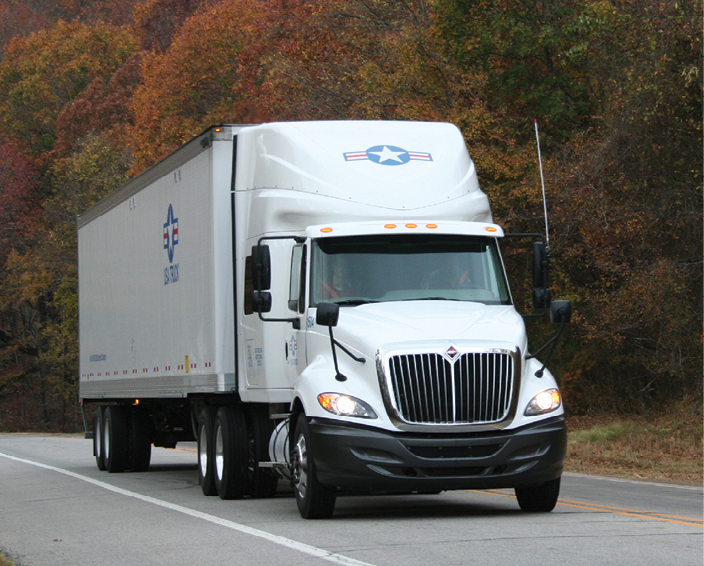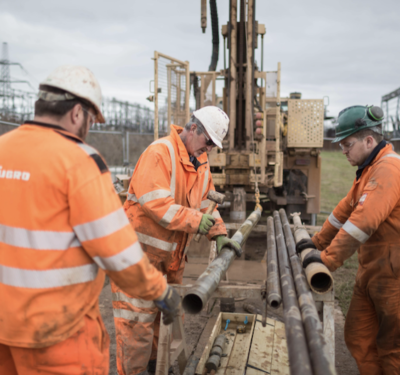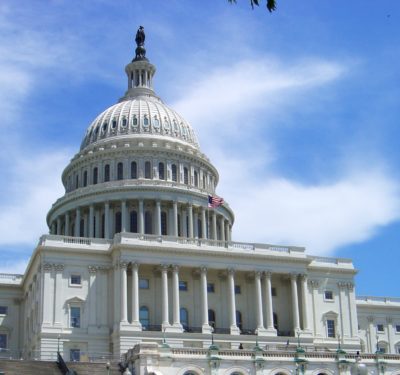
One potentially huge, and early, autonomous vehicle market lies within the trucking industry, specifically the employment of tractor-trailer platooning. However, state regulations may hamper what may be a market some say will save lives and money.
In a new report from the Competitive Enterprise Institute, “Authorizing Automated Vehicle Platooning, A Guide for State Legislators,” author Marc Scribner says there are great cost savings and safety gains from trucking platooning. However, state laws are different across each border—and some stand in the way of quick rollout of autonomous vehicle technology, he said.
Scribner contends there are “a range of uniformed opinions” that hurt the debate on road vehicle automation. These opinions range from popular press stories that autonomous vehicles should be banned because of their threat to public transit and the environment. The other extreme includes implementing the technology by 2018 because it promises safety benefits over traditional driving. Scribner cites Bryant Walker Smith, University of South Carolina law professor, who said that in most U.S. jurisdictions, automated vehicles are not prohibited by current laws. However, he highlighted several potential conflicts in state motor vehicle codes that may preclude certain operations.
One problem Smith identified is found in states’ following-too-closely Federal Trade Commission (FTC) statutes, which outlaw many automated vehicle platooning applications, the report said. Automated vehicle platooning, sometimes referred to as road trains, connected automated vehicles, or cooperative automated vehicles can travel close together at highway speeds, mitigating traffic congestion, improving fuel economy, and increasing vehicle throughput without costly physical roadway capacity expansions, the report said. “In the freight sector, trucking companies are eager to move their goods with fewer workers, addressing both the chronic shortage of qualified commercial drivers and permanently reducing labor costs,” the report said. “With the coming advent of automated vehicles, numerous sections of state motor vehicle codes likely will need revision if we are to take advantage of the full range of benefits offered by automated vehicles.”
According to the report, the four FTC rule types are: reasonable and prudent; time; distance; and sufficient space to enter and occupy without danger. A reasonable and prudent rule requires a vehicle operator to follow the vehicle in front of her while allowing for sufficient space to stop in an emergency, the report said. “This is an inherently subjective standard that grants law enforcement a large degree of leeway. It is the most common FTC rule for cars and is sometimes combined with other rule types,” the report said. “Time-based FTC rules specify the time interval between vehicles, such as by forbidding drivers from following no less than at least two seconds behind the vehicle being followed.” The time-based FTC rule is the least common rule type and is limited to just two jurisdictions, Alaska and Utah, according to the report. “Distance rules specify the precise safe following distance either by codifying a fixed interval or, in the case of Alabama, a proportional interval requiring that ‘the driver of a vehicle shall leave a distance of at least 20 feet for each 10 miles per hour of speed between the vehicle that he or she is driving and the vehicle that he or she is following,’” the report said. The report contends the distance rule type is most common among the heavy truck and caravan classes. The sufficient space to enter and occupy without danger rule, which is most common among the heavy truck and caravan classes, aims to allow other road users to pass other vehicles safely and enter and exit the roadway, the report said.
While few U.S. jurisdictions lack explicit FTC rules, they rely instead on broader reckless driving statutes, the report said. “In addition, a number of jurisdictions do not fully define all rule classes, which means the car rule class becomes the default for all vehicles. Further, some jurisdictions distinguish between road types,” the report said. “A small number of jurisdictions have functionally identical rule types featuring different terminology. But these are exceptions to the rule, not the norm. As a result, authorizing automated vehicle platoons in each jurisdiction merely requires exempting automated vehicle platoons from existing FTC rules.” The report says most class-specific FTC rules are contained within a single statutory section. “However, this is slightly more complicated in some jurisdictions, such as those in which FTC rules are spread through two or three class-specific statutory sections. For example, California’s FTC rules are divided into three separate statutory sections for cars, heavy trucks, and caravans,” the report says. “In addition, two jurisdictions, Alaska and Massachusetts, codify their FTC rules within administrative, rather than statutory codes.”
Utah First State to Authorize Testing
Utah was the first state to exempt and authorize the testing of connective vehicles in 2015, the report said. “Florida followed suit in early 2016, and other jurisdictions are considering similar moves,” the report said. Overall, the report makes two recommendations. The first, the “strong amendment,” is self-executing and would preclude the state from promulgating any regulations restricting automated vehicle platoons. This is the most liberal, strongly pro-market method of authorizing automated vehicle platooning, according to the report. The second, the “weak amendment,” would require agency implementation and grant state motor vehicle regulators discretion in how they promulgate platooning FTC rules, while providing a statutory backstop aimed at preventing excessively burdensome regulation, the report said. From a pro-market perspective, the strong amendment offers the greatest protections against potential burdensome regulations, the report said. “However, some legislatures may prefer to authorize platooning under a regulated rollout and thus prefer the weak amendment. In the latter case, lawmakers who opt for agency action will need to examine what additional agency resources may be required to carry out the weak amendment’s administrative mandate,” the report said.
In a presentation at the recent Automated Vehicle Symposium, Mountain View, California-based Peloton said it has gained approval from 10 states to test truck platooning. The company said truck platooning would save trucking companies about 7 percent in fuel costs. Nearly 4.5 percent in fuel savings would come from the lead truck—and 10 percent cost reductions from the following vehicle, the company said. Such truck manufacturers as Daimler, Volvo, Navistar International and Paccar are testing truck platooning worldwide.






